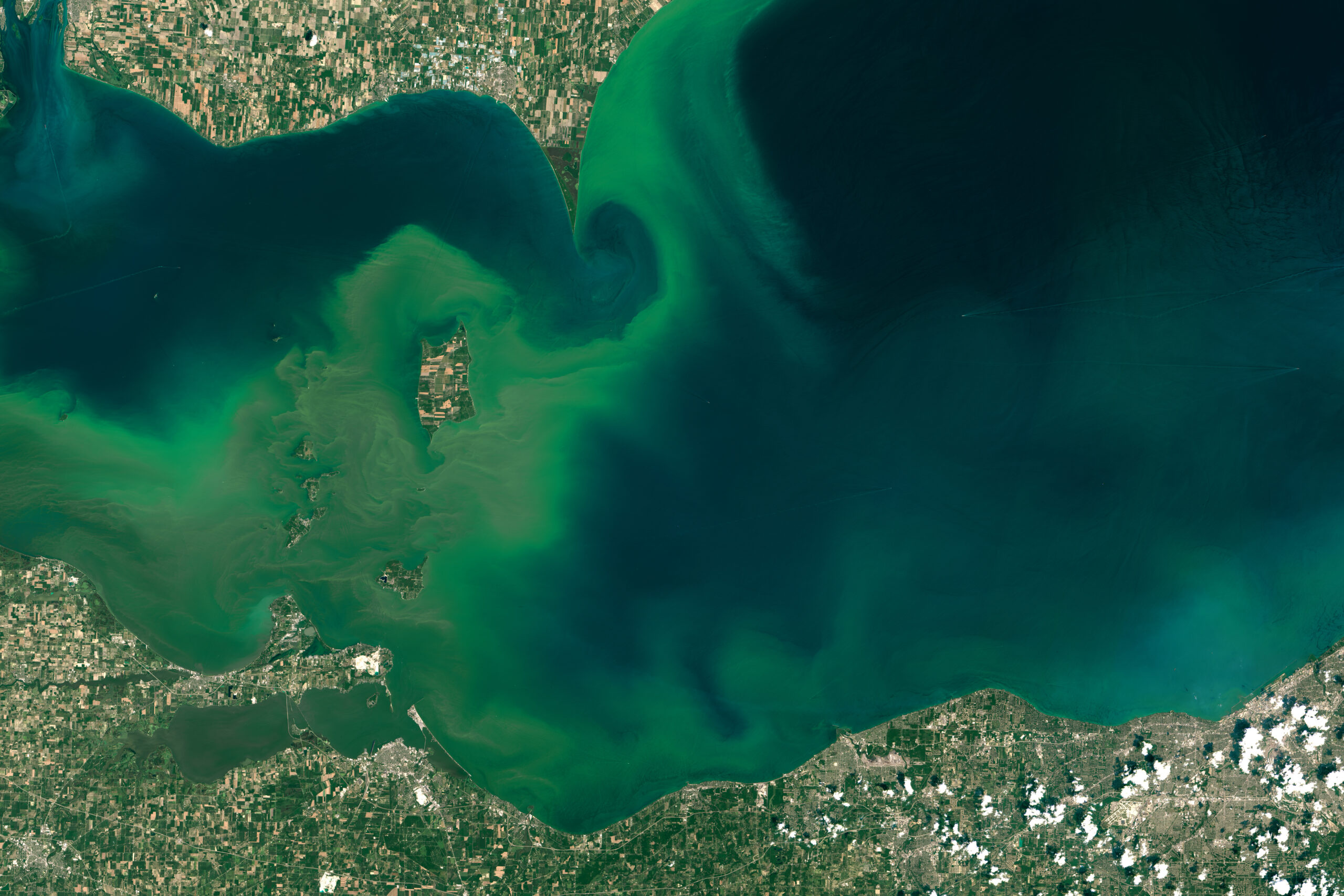Farmers aid in end to Lake Erie algal blooms
Lake Erie’s Slimy Problem
Patches of green sludge float near the top of the water and a foul odor hugs the shore. The Western Basin of Lake Erie shows up lime green in aerial photos. People are warned not to swim in the water and Toledo’s drinking water is shut off for days due to toxicity levels.
It’s the summer of 2014, and harmful algal blooms are contaminating water treatment plants. Three years prior algal blooms were recorded at the highest level seen in decades.
Following 2011, algal blooms, formally known as Cyanobacteria, would diminish and then spike up again following a pattern of precipitation. As warm breezes neutralized winter’s icy chill, they also swept in heavy spring rains.
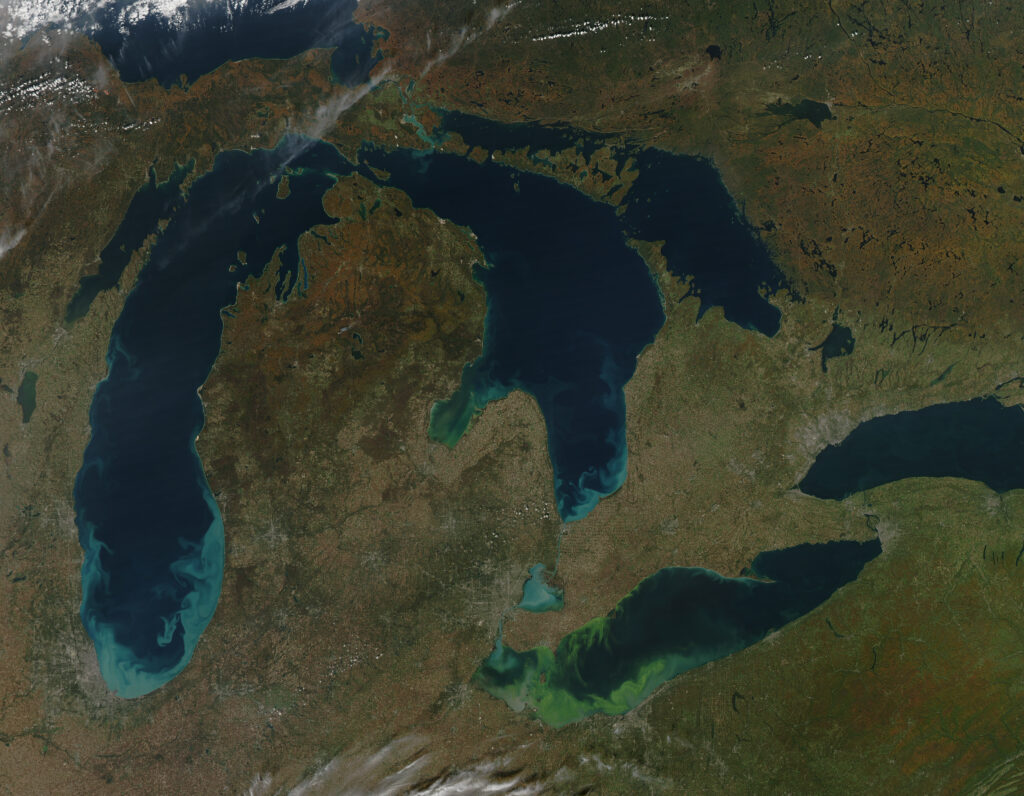
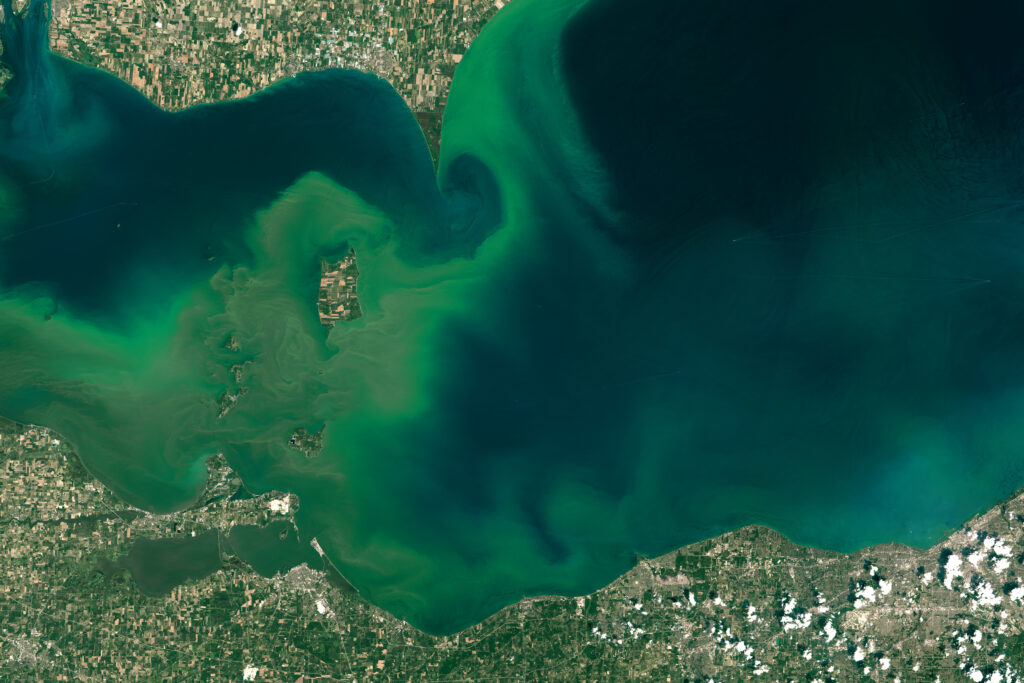
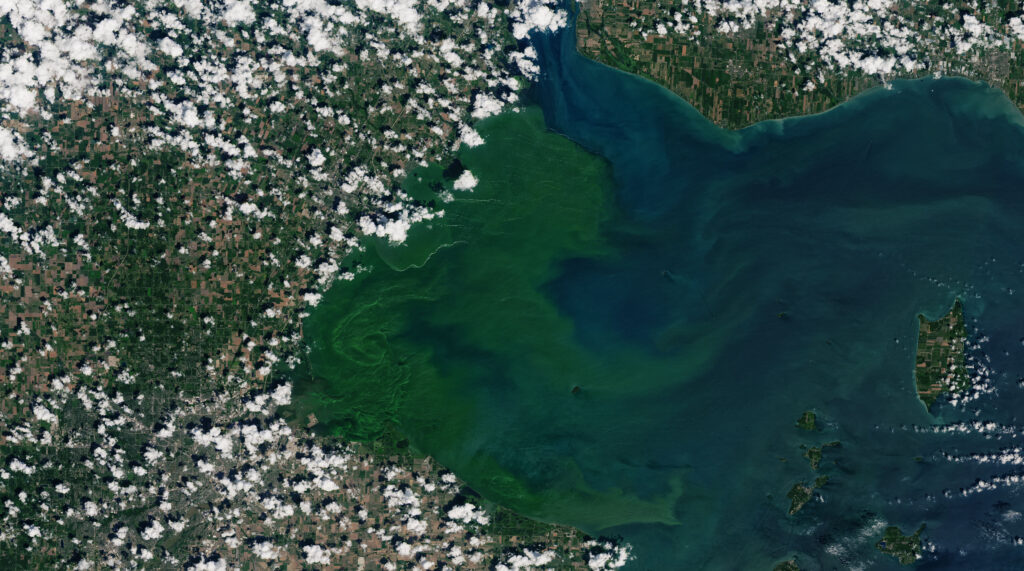
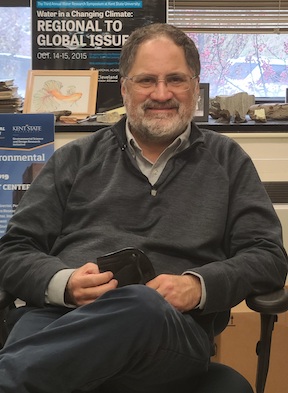
Just one torrential downpour is enough to wash away fertilizer on top of farm fields into nearby streams that lead to Lake Erie. The nutrient pollution and runoff catalyzes harmful algae growth, creating environmental and public health crises.
“If you have very high concentrations of Cyanobacteria in the water they draw down the nutrients out of the water. And that leads to either hypoxia, which is a very low level of oxygen, or anoxia, the complete removal of oxygen, and that creates massive fish kills,” said Joseph Ortiz, a professor in the Geology Department at Kent State University.
“Cyanobacteria are also adapted to producing toxins, predominantly microcystin in Lake Erie,” Ortiz continued. “In low concentrations, it can cause liver cancer over long term exposure. In high concentrations, it can cause death because of liver failure, as well as flu like symptoms and respiratory distress.”
Because of public awareness and conservation efforts there are not many deaths contributed to algal bloom exposure, Ortiz said. However, Lake Erie has the greatest population of people surrounding it and is the shallowest of all the Great Lakes, making it more susceptible to nutrient pollution and big blooms of Cyanobacteria.
Farmers Implement Strategies to Decrease Nutrient Pollution
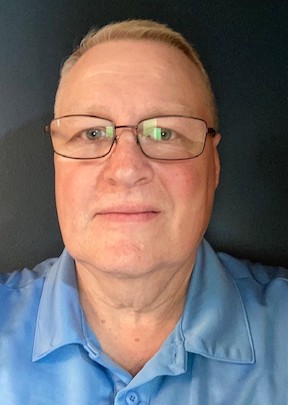
The greatest source of nutrient pollution in Lake Erie is phosphorus runoff from waste treatment plants and nearby farms. Waste treatment plants in Ohio have been reducing the amount of nutrient pollution, but runoff from sources that cannot be pinpointed to one location, like farms and lawns, have been more difficult to manage, Ortiz said.
To address non-point source pollution H2Ohio, a “water quality plan to reduce harmful algal blooms, improve wastewater infrastructure, and prevent lead contamination,” created an incentive program to help farmers reduce the amount of phosphorus fertilizer on their fields.
So far, a little over 40% of farm acres surrounding Lake Erie have been grafted into the H2Ohio program, said Clark Hutson, the Western Basin Lake Erie Program Coordinator of H2Ohio. 2,000 of those acres belong to Kris Swartz, a farmer 12 miles away from Maumee Bay, who has partnered with H2Ohio since it started up in 2019. Swartz participates in multiple H2Ohio strategies to minimize the amount of phosphorus and nitrogen fertilizers leaving his fields.
- Nutrient Management Plan (NMP)
A NMP is a requirement of H2Ohio for any farmer that wants to participate. The NMP calculates how much fertilizer each acre or section of farm land needs. The farmer’s responsibility is to use only the amount of fertilizer the NMP suggests and no more.
“The key aspect of our program is that farmers will be soil testing on all of their crops, and that soil test is called a nutrient management plan,” Hutson said. “By having more folks on a nutrient management plan and following it, we should see a reduction in phosphorus, especially on fields already high in phosphorus that don’t need additional fertilizer.”
A NMP is something that most farmers have in place to keep track of the soil needs across their fields, but the requirements of H2Ohio have farmers keep a written record.
“A few years ago we kind of just blanket spread on everything and didn’t really look at those numbers, but soiling testing every two or three years gets a better handle on that,” Swartz said. “It’s a little more paperwork but it’s pretty basic. The other practices in H2Ohio are a little more difficult to achieve.”
- Subsurface Placement
The strategy following a NMP is to subsurface place only the fertilizer recommended by the NMP. Subsurface placement uses a machine to insert the fertilizer below the surface of the fields in order to secure the fertilizer to the soil and protect it from heavy rains. Below ground the fertilizer is less likely to wash away into surrounding fresh water sources, Hutson said.
“We use a GPS to only apply phosphorus where it’s needed. A piece of equipment drives across the whole field, and injects the phosphorus below ground, but the computer turns the applicator on or off to adjust the rate,” Hutson said. “This is called variable rate technology that we (H2Ohio) paid for the first year of.”
However, subsurface placement can have drawbacks that makes it more difficult for the farmer doing the work.
“For me to subsurface place phosphate I can probably do 20 acres an hour, maybe. But when I broadcast spread it (on top of the surface) I could do 100, maybe 150 acres an hour,” Swartz said. “So it’s not only the cost, but the time commitment of these programs.”
- Cover Crops
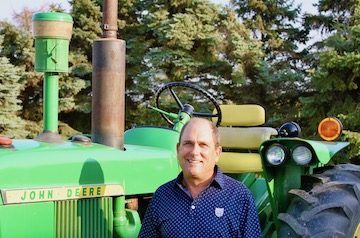
Cover crops ensure that during the off seasons between crops, the soil stays rooted down and keeps the nutrients where they are. Cover crops help prevent wind erosion and downpours from turning field fertilizer into nutrient pollution in Lake Erie, Swartz said.
H2Ohio wants farmers to plant cover crops earlier than usual so that they protect the soil before spring rains. This can be extremely difficult for farmers because in the past two decades precipitation has increased by 17%, which means that farmers have less work days in the field as it is. Asking farmers to do more earlier is a gamble with the weather.
“The weather patterns have really challenged us because we get these huge, flashy rains and the research has shown us that a big driver of algal blooms are these big downpours, these two or three inch rain events that drive away our phosphate,” Swartz said. “So we’re tasked with responding to some climate change and it can be really disheartening because I can do every conservation practice right for a whole year and some fluke weather event can wash it all away.”
H2Ohio works with farmers to help them succeed and is one of the only programs that does not penalize farmers if they cannot attain the acreage of cover crops they had agreed to, Swartz said.
“The best part of H2Ohio is that every sort of producer in Ohio has something they can do,” Swartz said. “The other strong point it that the contracts are not set in stone so there’s no penalty or remediation if the weather and changing environmental conditions keep you from meeting your goal.”
H2Ohio also partners with farmers in a cost share incentive to help carry some of the financial burden of planting cover crops early. From Swartz’s experience, 70% to 80% of cover crop costs are covered most of the time.
“In H2Ohio the incentive could be $25 an acre to plant a cover crop and it costs me $40 an acre. But on the other side, I think a lot of producers will tell you that when you have a good cover crop your herbicide costs the following year are reduced, so there’s some tradeoffs,” Swartz said.
Pros and cons of phosphorus fertilizer from a farmer’s perspective
Why some farmers hesitate to join H2Ohio
Farmers hesitate to join programs like H2Ohio because the results are almost impossible to gauge at this point being only two years in.
“There’s really no way to look accurately look at most of these fields and tell us what’s leaving and what’s not. We rely on some stream monitoring and governmental agencies to tell us what we’re doing collectively,” Swartz said. “The other thing is that we know that conservation practices we promote may not benefit me or water quality for years down the line, and by the same token, in farming, we know that if we do something bad, you may not get the bad effects for several years because it just takes that long.”
Another deterrence to joining a conservation program is that increased precipitation means less work days for farmers to try to accomplish the strategies recommended by H2Ohio. It only takes one big rain to counteract a good portion of the conservation work the farmer put in and there’s not much the farmer can do to prepare for adverse weather events, Swartz said.
Swartz also pointed out that some generational farmers may be uncertain of new practices and skeptical of trying them on their fields. Hutson agreed, but believes the science behind H2Ohio and the economic benefit should hold out.
“I have been around agriculture my whole life and many farmers are willing to try new things all the time. They just don’t like trying them on a large scale right out the gate. But that’s what we’re asking them to do,” said Clark Hutson the Western Lake Erie Program Coordinator at H2Ohio. “It (the incentives) does provide a buffer if there is an issue that might potentially reduces their yield, but we think there’s enough good science behind what we’re doing to not have a negative impact on their business.”
For the next few years H2Ohio provides farmers with some cost sharing financial help, so that farmers surrounding Lake Erie and other affected waters can take some trial and error time to figure out how to make these conservation strategies self-sufficient.
“I think a lot of producers are going to use the next years of incentives to learn how to tailor these practices to their program, and refine them, and get them going good enough that they become habit and cost effective,” Swartz said. “The environmental benefit should be worth it.”
